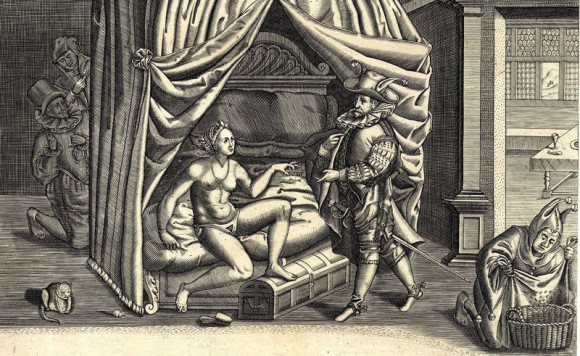Archive for the 'Oddities' Category
The armored bikini of your nightmares is a lie
It’s finally spring. What better topic than chastity belts? 😉
Here’s another nice piece from our clever friends at Atlas Obscura…
Everything You’ve Heard About Chastity Belts Is a Lie
by Sarah Laskow
“What was the chastity belt? You can picture it; you’ve seen it in many movies and heard references to it across countless cultural forms. There’s even a Seattle band called Chastity Belt. In his 1969 book Everything You Always Wanted to Know About Sex (But Were Afraid to Ask), David R. Reuben described it as an “armored bikini” with a “screen in front to allow urination and an inch of iron between the vagina and temptation.” “The whole business was fastened with a large padlock,” he wrote. With this device, medieval men going off to medieval wars could be assured that their wives would not have sex with anyone else where they were far, far away, for years at a time.
Yes, it sounds simultaneously ridiculous, barbarous and extremely unhygienic, but…medieval men, you know? It was a different time.
This, at least, has been the story that’s been told for hundreds of years. It’s simple, shocking, and, on some level, fun, in that it portrays past people as exceeding backwards and us, by extension, as enlightened and just better. It’s also, mostly likely, very wrong….”
For the rest, and some very interesting pictures, click here.
Share
A Story of Gilded Age Money Burning
Take THAT, money! (Plus, a very cool new vocabulary word for us: “ragpickers”) — enjoy the story…
From Atlas Obscura,
Think Kanye’s Bad With Money? This Family Literally Burned $1 Million
by Sarah Laskow
“In 1937, one of the wealthiest families in America delivered a suitcase filled with cash to the Treasury Department of the United States, who paid $198,176 to one of the richest families in America, for a pile of money worth as much as $1 million. They didn’t go on a shopping spree, though.
In fact, after the Treasury took possession, the Associated Press reported, that cash was “hacked to pieces and burned.”
The Treasury did keep one bill—a $500 note that the Treasury had issued in the mid-19th century. It was in better condition than the one in the official Treasury collection.
Far from an example of government overreach, this strange incident of money-burning was a canny strategy to make the estate of one Colonel E.H.R. Green even more valuable. It was also a preamble to the demise of one of the greatest currency collections ever assembled.
This collection was begun by Hetty Green, the only female tycoon of the Gilded Age. Green was famously tight-fisted with her money—she lived in Brooklyn and Hoboken to avoid paying Manhattan taxes—but found physical bills fascinating (and valuable) enough that she started amassing rare currency, along with regular old money.
Although coin collecting had been in vogue for centuries, until the 1940s, collecting paper money was rare. Even then, coin collecting was more prestigious. “Until recently, the derisive term used by coin collectors to characterize those of paper money was ‘ragpickers,’” says Art Friedberg, co-author of Paper Money of the U.S….”
For the rest, click here.
Share


